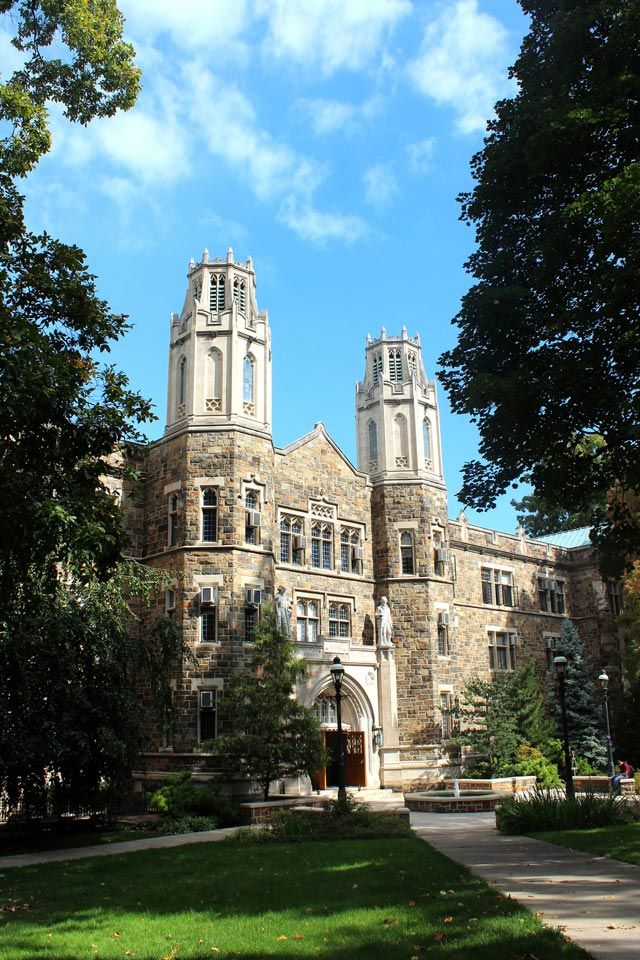Viruses lie on the border between living cells and inert matter. Their genetic material, or genome, is housed inside a protein shell, or capsid. Like living cells, viruses can reproduce but they need to hijack the biochemical machinery of a host cell to do so.
When a virus infects a cell, it releases genetic material into its host’s cytoplasm and makes numerous copies of itself. Each new strand of genetic material is encapsulated by a new capsid that forms when protein molecules self-assemble.
Scientists have discovered that viral capsid proteins can form hollow shells without the presence of the viral genome. This process is not yet fully understood but is known to involve a combination of hydrophobic and electrostatic interactions.
“To gain a better understanding of the complex nature of viral capsid formation, we need to find a simple analogous model system that mimics the process,” says Tianbo Liu, associate professor of chemistry in the College of Arts and Sciences (CAS). “This would allow us to determine how individual parameters such as pH, ionic strength and temperature affect shell formation.
“Viral capsid proteins are essentially charged macroions that contain both hydrophilic (water-loving) and hydrophobic (water-hating) components,” says Liu, “so it is vital for our model system to contain both.”
Liu had previously discovered that various hydrophilic macroions could self-assemble into single-layered vesicular superstructures controlled by counterion-mediated attractions, which distinguishes them from regular bilayer lipid vesicles.
“M12 L24 nanocages are positively-charged macroions that contain both hydrophilic and hydrophobic components, making them good model candidates,” says Liu. “The hydrophilic components are positively-charged palladium ions that are evenly distributed on the surface of the nanocage. These are held together by organic hydrophobic ligands.”
In a collaboration with Makoto Fujita of the University of Tokyo and Lehigh faculty members Kai Landskron (chemistry, CAS) and Christopher Kiely (materials science and engineering), Liu studies the properties of metal-organic nanocages to determine the parameters that affect their self-assembly into hollow shells.
Using a combination of dynamic and static light-scattering techniques, the team has found that the vesicular superstructures formed were indeed single-layer hollow spheres with a diameter of 38nm and that the distance between the nanocages was approximately 0.7nm.
Maintaining a charge balance requires the presence of an equal number of negative ions, which in this case are small nitrate ions.
“There is plenty of space between the nanocages to accommodate these counterions,” says Liu. “The electrostatic interaction between the nanocages and the counterions help hold the nanocages together in the vesicular superstructure.”
The group also found that by boosting the ionic strength of the solution with palladium nitrate, the size of the vesicles increased. The number of vesicles that started to form also increased. Conversely, a reduction in ionic strength resulted in an acceleration of the self-assembly process.
To secure more direct evidence for the formation of the hollow shell structures, Liu and Kiely obtained images of the nanocages and hollow spheres using transmission electron microscopy.
“The vacuum inside the microscope caused the solvent inside the vesicle to evaporate, and the sphere collapsed,” says Kiely, director of Lehigh’s Nanocharacterization Laboratory.
“But by measuring the intensity profile across the image of one of these collapsed vesicles, which was either the same or double that of a single nanocage, we were able to conclude that original vesicles were indeed single-layer hollow structures.”
“In our current experiments, the self-assembly of single nanocages into hollow spheres requires days or even months to reach equilibrium,” says Liu, “whereas the timeframe for viral capsid formation is hours or days. Experiments are underway to reduce the timeframe for nanocage self-assembly.”
The project is funded by NSF and the Alfred P. Sloan Foundation.

